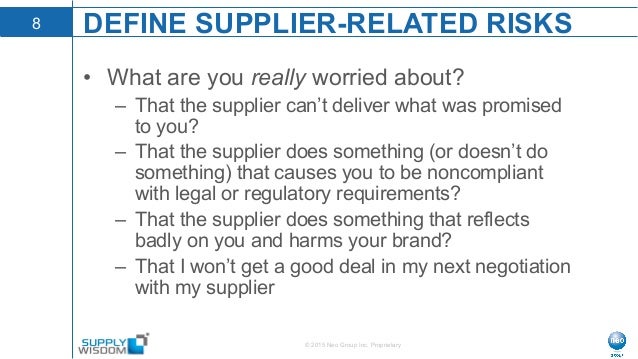

Appropriate monitoring and testing processes are key in ensuring that risk mitigating controls are working as expected. It’s also important to frame policies, and implement controls to mitigate third-party risks. A comprehensive and carefully written contract that outlines the rights and responsibilities of all parties can help you better manage third-party relationships.
#Third party oversight process drivers
This risk identification process should be followed by an analysis of the specific drivers that increase third-party risk.Ī good practice is to focus strongly on contracts that govern third-party relationships. These risks are often multi-dimensional as they extend across suppliers, vendors, contractors, service providers, and other parties, and can have an impact on different levels of the organization such as product lines, business units, and geographies.Īn effective third-party risk management process begins by comprehensively identifying third-party risks such as process risks, political risks, undesirable events, contract risks, legal and regulatory non-compliance risks, and information system failures.

As data access becomes easier, and as security breaches proliferate, a strong TPM program is essential to ensure accountability.īest Practices to Enhance Your TPM ProgramĮach third-party relationship brings with it a number of risks that need to be identified in time. Mobility - Ubiquitous access to data across mobile devices poses multiple security risks. The key is to leverage social media to gather third-party intelligence, while also identifying and mitigating the risks that come along. On the other hand it brings along potential security risks and privacy concerns for business-critical information. Social Media - On one hand social media improves transparency, collaboration, and efficiency across the third-party network. Recent data breaches and security incidents have highlighted the vendor risks that come with virtualization, and the need to have deeper visibility into the third-party ecosystem. With the advent of the cloud, virtual data centers, and hosted apps, companies are using vendors to process their critical business information, thus transferring data outside their firewalls. Virtualization - Technology has dramatically changed the way organizations operate. Globalization - As the world gets flatter, organizations with global third-party networks are faced with a multitude of rules, policies, data, standards and regulations – all of which make the case for a robust TPM program. Developing a strategy for optimizing third party relationships is essential, as is knowing the third parties one deals with. It is in this context that there emerges the need for an integrated view of third-party risk, compliance, performance, quality, and adherence to contracts. Companies are now taking more comprehensive steps to ensure that their third parties not only comply with regulations, but also protect confidential IT information, avoid unethical practices, keep up a safe and healthy working environment, strengthen supply chain security, handle disruptions effectively, and sustain high quality and performance levels. To minimize the impact of third-party risks on business performance and brand image, the scope of TPM is expanding beyond traditional surveys and assessments for third-party risks and compliance. Without an appropriate business continuity plan to deal with these unpredictable events, organizations suffer not only monetary losses, but also customer losses to competitors. Be it the earthquake and tsunami in Japan, the Thailand floods, or the labor dispute at the West Coast port, these disruptions greatly affected the flow of goods and services to organizations. With third parties spread across the world, supply chain disruption risks are on the rise. Penalties and reputational damage from non-compliance, supply chain disruptions, security breaches, and data thefts involving third parties are driving companies to continually improve their Third-Party Management (TPM) programs. However, third-party relationships come with multiple risks, including strategic, reputational, regulatory, information security, and financial risks. Organizations rely heavily on their third parties for improved profitability, faster time to market, competitive advantage, and decreased costs.


 0 kommentar(er)
0 kommentar(er)
